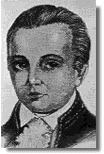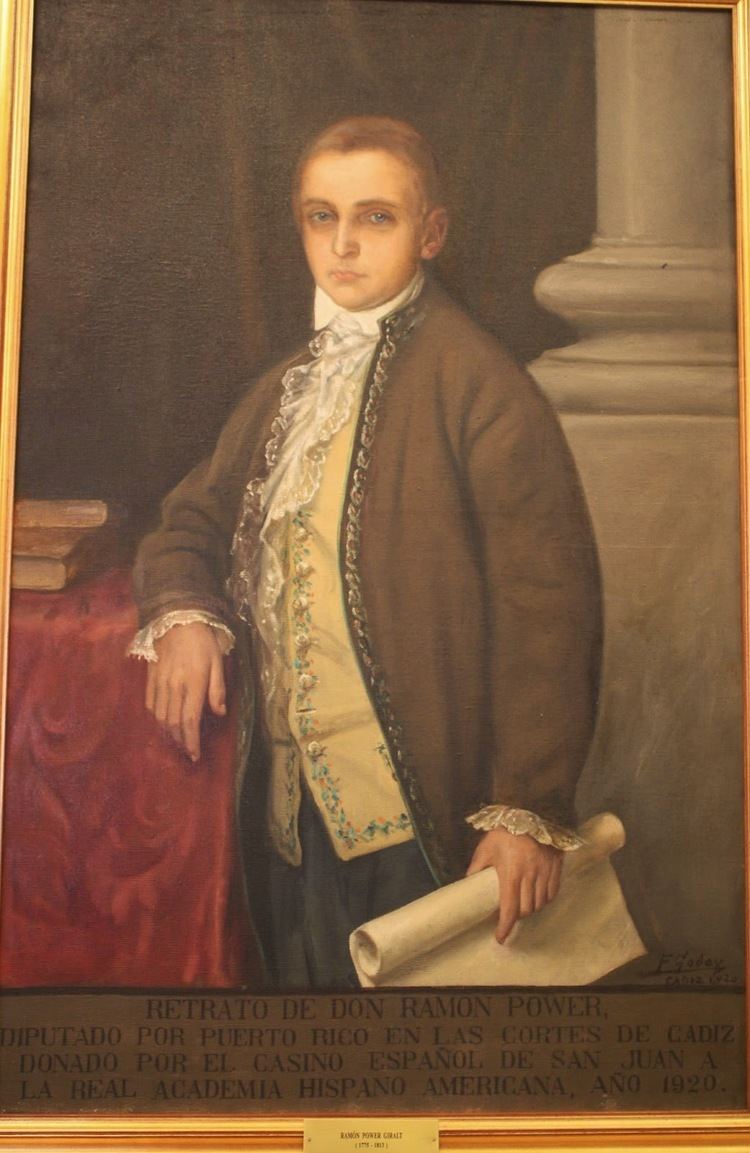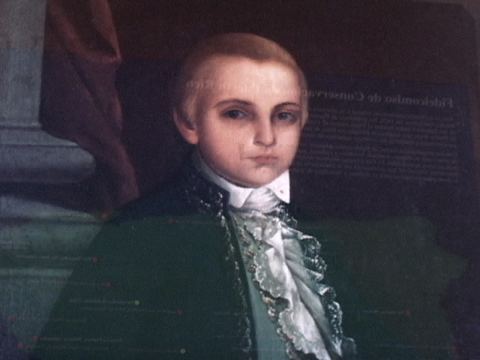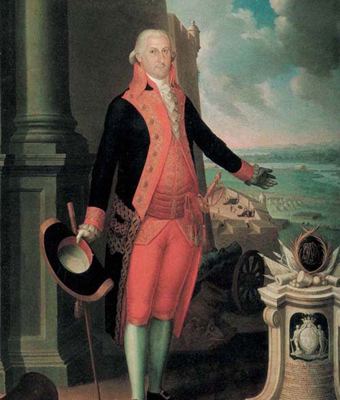Years of service 1795-1809 | Name Ramon y | |
 | ||
Battles/wars Santo Domingo against an invasion from French forces | ||
por qu estudiar a ram n power y giralt
Captain Ramón Power y Giralt (October 7, 1775 – June 10, 1813), commonly known as Ramón Power, was, according to Puerto Rican historian Lidio Cruz Monclova, among the first native-born Puerto Ricans to refer to himself as a "Puerto Rican" and to fight for the equal representation of Puerto Rico in front of the parliamentary government of Spain.
Contents
- por qu estudiar a ram n power y giralt
- S a la cultura ram n power y giralt llega a puerto rico 1 3
- Early years
- Spanish Naval service
- Political career
- Death
- Return of his remains to Puerto Rico
- Honors and tributes
- References

S a la cultura ram n power y giralt llega a puerto rico 1 3
Early years
Power was born in San Juan, Puerto Rico, to Joaquín Power y Morgan, a Spaniard from the Basque Country (of Spanish, Irish and French descent) who came to Puerto Rico in connection with the Compañía de Asiento de Negros which regulated the slave trade in the island, and María Josefa Giralt y Santaella a Catalan from Barcelona, Spain. His great-grandfather Peter Power moved from Waterford, Ireland to Bordeaux, France, the grandfather Jean Baptiste Power Dubernet from Bordeaux to Bilbao, and the father Joaquín Power y Morgan from Bilbao to Puerto Rico. In San Juan he received his primary education at a private school. In 1788, when he was 13 years old, he was sent to Bilbao, Spain, to continue his educational studies.
Spanish Naval service

At the age of 16, Power began his studies of Naval sciences in Spain. Upon graduation he was commissioned a lieutenant in the Spanish Navy and eventually rose to the rank of Captain.

In 1808, following Napoleon's invasion of Spain, the criollos of Santo Domingo revolted against French rule. Colonel Rafael Conti, a fellow Puerto Rican, organized an expedition to return Hispaniola back to Spain. Col Conti together with naval Captain Power y Giralt distinguished themselves with the defense of the Spanish colony of Santo Domingo against an invasion from the French forces by enforcing a blockade with the aid of Great Britain (Spain's ally at the time) and Haiti, returning Santo Domingo back to Spanish control.
Political career

On May 4, 1809, in the midst of Peninsular War and Napoleon Bonaparte's occupation of Spain, Power was elected by the five, local cabildos (town councils) to represent Puerto Rico in the Junta Suprema Central y Gubernativa del Reino (Supreme Central and Governing Board of the Kingdom). (In 1808 Napoleon had deposed Ferdinand VII and named his eldest brother, Joseph I, King of Spain. The Junta Suprema was leading the resistance against the Bonapartes.) The Junta Suprema dissolved itself before Power could arrive, nevertheless, the following year on April 16, he was again elected to represent Puerto Rico, this time in the Spanish Cortes, the parliamentary assembly that had been convened by the Junta and was gathering in the Southern Spanish port of Cádiz. One of his greatest supporters was Bishop Juan Alejo de Arizmendi, who during the official farewell Mass, gave Power his episcopal ring as a reminder that he should never forget his countrymen. After arriving in Cádiz on June 8, 1810 he joined the growing number of delegates, which finally reached a quorum in September. Power was an avid advocate for Puerto Rico during his tenure (September 24, 1810— June 10, 1813) as a delegate in the Cortes. In September 25, 1810, the second day of regular meetings, he was elected as vice-president of the Cortes and succeeded in obtaining powers which would benefit the economy of the Puerto Rico. The most well-known product of the assembly was the Constitution of 1812.
Before the Constitution was written, Power convinced the Cortes to reverse a d Aecree of the Council of Regency which had given the governor of Puerto Rico extraordinary powers in reaction to the establishment of juntas in South America. The highlight of his legislative career was the Ley Power ("the Power Act"), which designated five ports for free commerce—Fajardo, Mayagüez, Aguadilla, Cabo Rojo and Ponce, established the reduction of most tariffs and eliminated the flour monopoly, in addition to establishing other economic reforms with the goal of developing a more efficient economy. It also called for the establishment of a Sociedad Económica de los Amigos del País on the island, which was approved in 1814. Many of these reforms remained in effect even after Ferdinand VII revoked the Spanish Constitution.
Death
Power died while still in Cádiz on June 10, 1813 from the yellow fever epidemic which had spread throughout Europe. He was succeeded in the Cortes by José María Quiñones who served from November 25, 1813— May 10, 1814. He was buried at the Oratorio de San Felipe Neri church in Cádiz.
Return of his remains to Puerto Rico
According to The San Juan Star (Puerto Rico's English language newspaper), a movement led by the Archibishop of San Juan, Roberto González Nieves, was successful in its attempt to bring Power's remains back to Puerto Rico. Power's remains were exhumed where he was interred along with other delegates' to the Cortes, at the church in Cadiz.
After DNA testing, the remains were brought by the Spanish Tall Ship Juan Sebastián Elcano. On the 2nd March, 2013, it left the port of Cadiz, stopping at Las Palmas de Gran Canaria, Canary Islands before leaving on the 10th March across the Atlantic Ocean taking 28 days to return Power y Giralt's body to San Juan, Puerto Rico on April 6, 2013. It was escorted by the United States Coast Guard into the port and received with a 21 gun salute. Present to receive the remains were the Governor of Puerto Rico, and presidents of all branches of government. His resting place now is at the Cathedral of San Juan Bautista next to Bishop Juan Alejo de Arizmendi.
Honors and tributes
Both Puerto Rico and Spain have honored Power's memory, by naming several avenues after him. San Juan also has a school named after Power the "Ramon Power Y Giralt School" located in Calle Loiza Final.
His former residence was restored and currently houses the Puerto Rico Conservation Trust in Old San Juan. Power's contemporary, José Campeche, honored him in a painting entitled The Shipwreck of Power. Graphic artist Lorenzo Homar has also dedicated one of his artistic works to Ramón Power.
